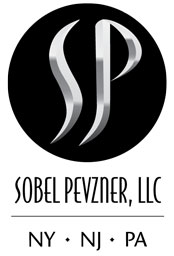LIQUOR LIABILITY IN NEW YORK AND NEW JERSEY
A dram of whiskey sounds harmless enough, and in fact it is. If a typical person consumes a mere dram of whiskey, defined as 1/16 of an oz, it is safe to say that the party who served, be they a commercial establishment or social host, would never be liable for any accident which occurred following its consumption.
In every State, it is illegal to drive with a blood alcohol concentration (BAC) of .08% or more. Even though everyone absorbs and metabolizes alcohol at different rates, and there are a lot of factors that affect BAC, a person weighing 160 lbs. can consume 6 oz of alcohol (96 drams) while a person weighing 200 lbs could finish off 7.5 oz of alcohol or (120 drams) before reaching a BAC of .08%.
However, it is often not the actual number of drams consumed that gives rise to liquor liability, but rather the lack of adequate insurance coverage for the truly responsible party which forms the true reason behind an action based upon the “dram shop law.” The potential for dram shop liability has been codified in New York and New Jersey under NY General Obligations Law Section 11-101 and N.J.S.A. 2A:22A-3 respectively. In both New York and New Jersey, potential dram shop liability extends to both the commercial purveyor and social host. Thus, insurance coverage which is potentially implicated in a dram shop case can be found in a typical Business Owner’s Policy (BOP) as well as an individual homeowner’s or renter’s policy of insurance.
While there are some minor variations in the common law interpretations of each State’s dram shop statutes, both States prohibit the commercial sale of alcohol to people who are visibly intoxicated or under the age of 21 and thus liability on the part of a business can arise out of the subsequent conduct of a person who is a minor or is visibly intoxicated when served. The definition of “visibly intoxicated” is left largely to the discretion of the employee who serves the alcohol. Tell-tale signs of visible intoxication may include slurred speech, bloodshot eyes, and lack of physical coordination but can also be proven merely through circumstantial evidence. However, a single piece of evidence such as a BAC reading is not generally considered sufficient to establish that the party was visibly intoxicated when served.
In 1983, New York State extended the potential for dram shop liability to social hosts; however, limited potential liability under G.O.L 11-100(1) to those who either provide or assist in providing minors with alcohol when that minor subsequently causes injuries to third parties. Social Host Liability under New York Law, requires that a plaintiff meet all three of the following prongs: (1) the social host must have actual knowledge or reasonable belief that the individual is under 21 years of age; (2) the defendant must have authorized the consumption of alcohol on their premises; (3) the defendant must have actively assisted in procuring the alcohol for the minors.
In stark contrast to the New York social host statute which was clearly written to address underage drinking, New Jersey’s social host legislation does nothing in regard to the potential for full common law liability of a party who serves alcohol to someone who is underage.
In New Jersey, a “Social Host” is defined as one who is hosting guests but neither holds a liquor license nor is required to hold a liquor license and legally provides alcohol to a person who is of legal age to purchase alcohol. A social host may be found liable for providing alcohol if all of the following apply: (1) the social host “willfully and knowingly” provided alcohol to someone who was visibly intoxicated in his/her presence or if not in their presence, under circumstances manifesting reckless disregard of the consequences as affecting the life or property of another. The party’s BAC can give rise to a presumption of visible intoxication based upon the reading. For example, if the person tests between .10%-.15%, there is a rebuttable presumption that the social host does not meet this prong of the test; (2) the social host provided the alcohol to the visibly intoxicated person under circumstances which created an unreasonable risk of foreseeable harm to the life or property of another, and the social host failed to exercise reasonable care and diligence to avoid the foreseeable risk and (3) the injury arose out of “an accident caused by the negligent operation of a vehicle by the visibly intoxicated person.
It is safe to say that serving a visibly intoxicated person in either New York or New Jersey can imbue the purveyor or social host with more than a mere dram of trouble. For a complete copy of all cases reviewed in preparing this article, please contact the writer at csobel@sobelpevzner.com.

Curtis Sobel is a partner at
Sobel Pevzner, LLC


